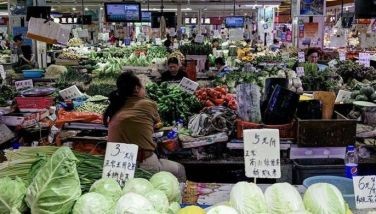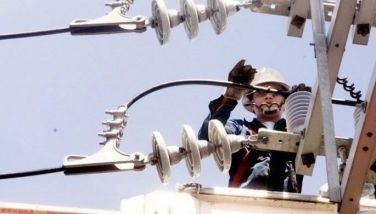Energy czar

Ronnie Velasco was called the “energy czar” and for good reason. He assumed sole responsibility for everything that happened (or did not happen) in the country’s energy sector. The buck truly stopped at his desk. As Minister of Energy, Chairman of both the Philippine National Oil Co. and the National Power Corp., he assumed full responsibility for all these agencies.
Velasco’s first problem on the first hour after he was sworn in was to deal with the oil supply boycott announced by the Arab oil producing countries against the West, including the Western oil companies. The oil majors in turn announced what they called the “equal misery formula”, which called for proportionate cuts in the supply of markets like ours depending on how much the majors were cut by the Arabs. We were totally dependent for our energy needs on oil that the oil majors brought here. There had to be a better way of protecting the interest of the country than depending on the oil majors.
Velasco’s solution was to secure government-to-government supply deals with the oil producing countries, Arab and non-Arab. While the solution sounded hopeful, it was a new concept and not easy to implement. The
But securing the oil supply contracts did not solve the basic problem of the country’s total dependence on imported petroleum for energy. Velasco worried that the country may not be able to afford the rising dollar cost of crude. Thus, developing the country’s energy resources, from oil to hydro and coal was the next step. The problem was where to begin. There was no reliable inventory of just what exactly the country had by way of energy resources.
It was a big task and Velasco confessed in his memoirs that he wouldn’t have been able to do it without the management expertise of the Filipino executives of the recently acquired Esso
For this task, Velasco also sought the assistance of experts within the University of the Philippines, principally the geologists who had first hand knowledge of what are potentially available in terms of oil and coal deposits, among them Dr. Arthur Saldivar-Sali. He also met Dr. Arturo Alcaraz from the Volcanology Commission who introduced him to geothermal energy, then considered an exotic energy resource.
Soon enough there was a map of the
Velasco assigned the late Wenceslao dela Paz, then a young and brilliant lawyer also from Esso, to work on the legal aspects of inviting oil prospectors to do further oil exploration studies and eventually develop the small fields. De la Paz came out with the service contract concept which preserved the need to keep natural resources in government hands while at the same time making development worthwhile to oil exploration companies that had the knowhow and the money to undertake the risky venture.
Velasco’s big achievement however, was in the area of geothermal development. PNOC’s work under the guidance of Dr. Alcaraz and the management of Pablo Malixi, a veteran Esso executive, found out that we had substantial geothermal resources in the country. The problem with geothermal however, is its location… mostly in remote areas and must first be converted to electricity for it to be useful. A massive power development program with National Power Corp. was then undertaken to exploit the resource.
Velasco also developed coal deposits but the geology of the country did not allow for large deposits that were easily exploited in open pit mines. Only Semirara was big enough. So Velasco tasked Mario Tiaoqui, another Esso veteran, to work out the logistics system of importing coal and blending it with local coal for use in power generation. This approach reduced our oil dependence as well as reduced the cost of generated electricity.
The Bataan Nuclear Power Plant was not an original Velasco project but one he found on his plate one day. Velasco always said he believed that the country should eventually go nuclear but he thought the Bataan Plant itself was too expensive… over priced for its 620 MW capacity. He, however, managed the project’s construction as instructed by President Marcos. The plant itself, with its nuclear fuel rods in place, was ready to produce power when People Power came around and a change of government led to a change in policies.
Velasco’s contribution to the energy sector in the country is largely in showing us how to respond to this world wide energy crisis. He was able to put in place a development program that gave us reasonable assurance of energy supply as well as diversified our sources. He initiated the development of domestic energy resources and instituted the practice of planning for our energy requirement initially based on a 10 year horizon and subsequently on five years. Unfortunately, the process was not continued with the same passion that was there during his time.
Indeed, Ronnie Velasco is probably the first and thus far, the only one who deserved to be called an “energy czar”. Those of us who reported directly to him look back with pride on the years we worked together. He drilled in us the sense of mission and professionalism that made the energy sector a beehive of activity in those years of crisis. Because everything we were doing was new, we had this feeling of being groundbreaking pioneers specially in the search for alternative energy. Best of all, he shielded us from politics, allowing us to concentrate on getting our work done.
I read the headlines today about biofuels, non-conventional energy, solar, wind and other non-fossil fuel energy sources and even energy conservation and I can shrug and say, been there… done that. I once told one of Ate Glue’s many energy secretaries who seemed to be floundering on the job that all he had to do was dig up the files of our past projects and he need not reinvent things. He can pick up from where we left.
If only they pursued the program we had evolved under Velasco, if only they built on it and given it the importance it deserves, maybe we wouldn’t be having the energy problems we have today, or at least, we would be able to manage them better. Velasco showed that all it takes to handle the energy crisis is effective leadership. We need an energy czar who knows his job the way Velasco did.
I was surprised when I was told about his death last Tuesday afternoon. I know he is turning 80 this Oct. 6, but the last time we met at Chitang Nakpil’s Wednesday lunch at Havana Greenbelt, he looked destined to live to his 90s. He was a physical fitness fanatic who considered his daily time at his treadmill a mandatory religious rite. Then again, as he often sighs when we ponder philosophically on life’s mysteries, c’est la vie.
And so we now bid Ronnie Velasco a final adieu. We know he can rest in the knowledge that he had contributed greatly to his country at the time when it was most needed.
Oil prices
“As you know, the government takes 40 percent of what you make. The other 60 percent, of course, taken by the gas stations.” — Jay Leno
Boo Chanco ‘s e-mail address is [email protected]
- Latest
- Trending






























